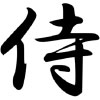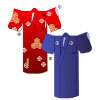On-site Social Events
Home > Social Events > On-site Social Events
ICPR2012 prepares some local socializing activities at conference site. Experienced teachers will teach you Japanese cultural activities. (Some classes will be given by English; some are with English translator(s).) Reservation is encouraged (if seat is available, you can join the class on the day). No preparation is needed. All classes are free of charge.
Reservation
Send your e-mail
To: icpr2012-socialevent-ml(at)aist.go.jp
Subject: (See below)
In the e-mail, list the name of the participants (you can make reservation as group by listing all the names.)
Class List
[Legend] Month/Day, HH:MM-HH:MM
Subject (Number of participants / Room)
Day |
AM |
PM |
|---|---|---|
Nov 12 Monday |
10:40-12:40 Class12AM-Caligraphy (#10/407) |
14:30-16:30 Class12PM-Caligraphy (#10/407) |
| Nov 13 Tuesday |
10:30-12:30 Class13AM-Kimono (#14/Japanese-Room [305 or 306]) |
14:30-16:30 |
Nov 14 Wednesday |
10:30-12:30 |
14:30-16:30 |
Nov 15 Thursday |
10:30-12:30 (#10/407) |
14:00-16:00 |
Calligraphy (Japanese calligraphy, “Shodo”)
 Participants: 10
Participants: 10
Wikipedia http://en.wikipedia.org/wiki/East_Asian_calligraphy
Shodo is a classic way of writing Japanese letters. Before Meiji Era, it was the only way to write documents by hand in Japan. Please do not come with important clothes, as the ink cannot be removed if it is spotted on the clothes.
Japanese Kimono
 Participants: 14 (4 for men, 10 for women)
Participants: 14 (4 for men, 10 for women)
Wikipedia http://en.wikipedia.org/wiki/Kimono
Japanese Kimono is a traditional and beautiful clothes as you may see in movies. Unfortunately, people seldom put on Kimonos nowadays in Japan. Why don’t you give it a try to put on Kimono by yourself? The instructors and assistants will help you for wearing Kimono. You can take pictures with Kimono.
Japanese Abacus (“Soroban”)
 Participants: 5
Participants: 5
Soroban is a Japanese abacus and it was invented around 1600 (originally from China). Before the computer age starts, soroban was the fastest way for calculation. It is still used and it is considered to be good for childhood education.
Origami (Paper folding)
 Participants: 10
Participants: 10
Wikipedia http://en.wikipedia.org/wiki/Origami
Starting with just a square paper, you can make Japanese helmet (“Kabuto”), plane, box, boat, crane, almost anything on earth without scissors and pastes. Almost all the kids in Japan are fond of playing Origami.
Tea Ceremony (“O-cha”, “Cha-seki”)
 Participants: 20
Participants: 20
Wikipedia http://en.wikipedia.org/wiki/Tea_ceremony
Japanese Tea Ceremony (or “O-Cha” in Japanese) is not just a way of serving and having a Japanese tea in traditional format, but the way we Japanese treat precious guests in a very modest and calm fashion. You can enjoy a good contrast of Japanese sweet (specially cooked for tea ceremony) and bitter green tea. Experienced teacher will tell you the procedure, so do not worry.
Contact Address
If you are interested in on-site social events at ICPR2012, please contact
ICPR2012 Local Arrangement (On-site social events)
icpr2012-socialevent-ml@aist.go.jp






